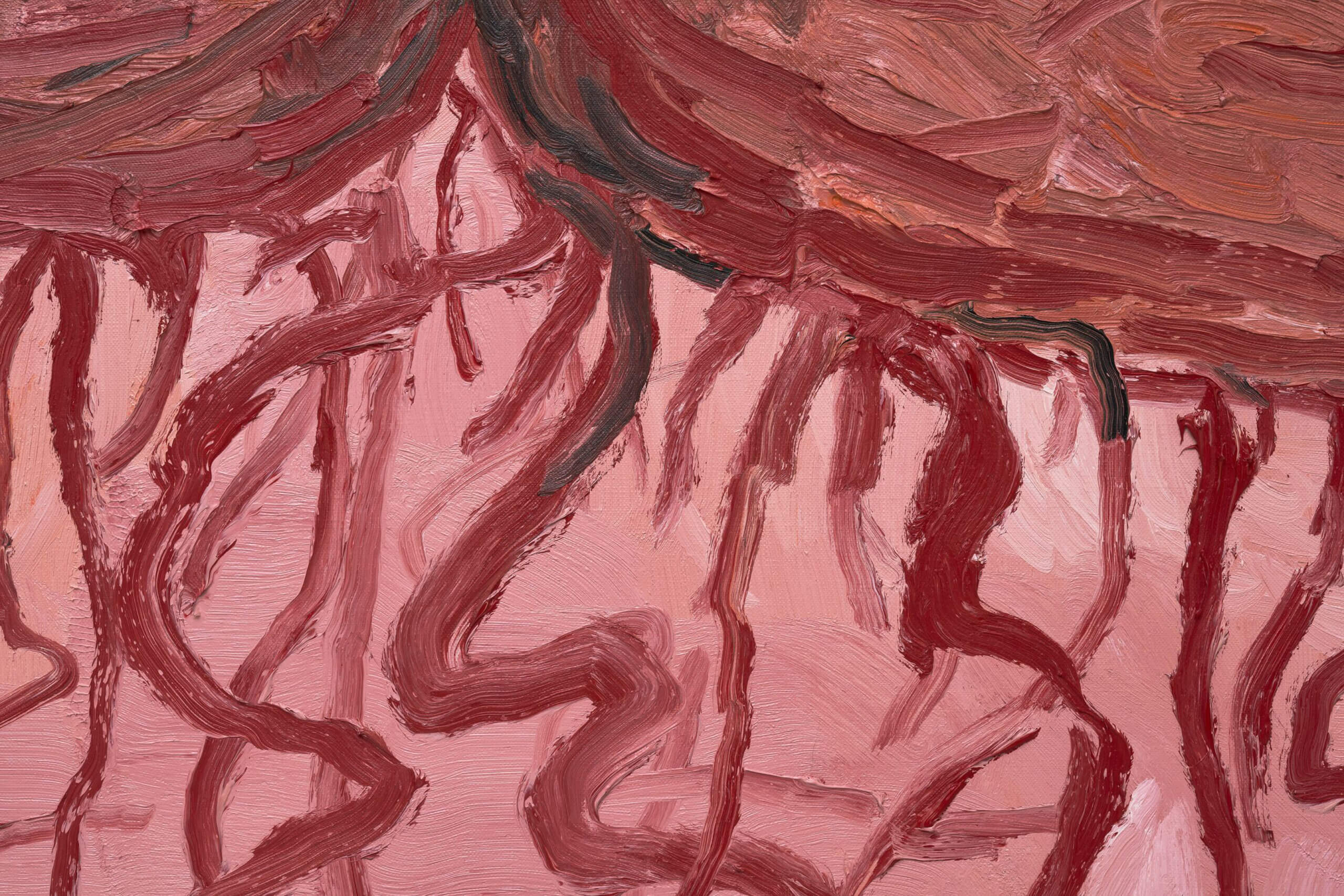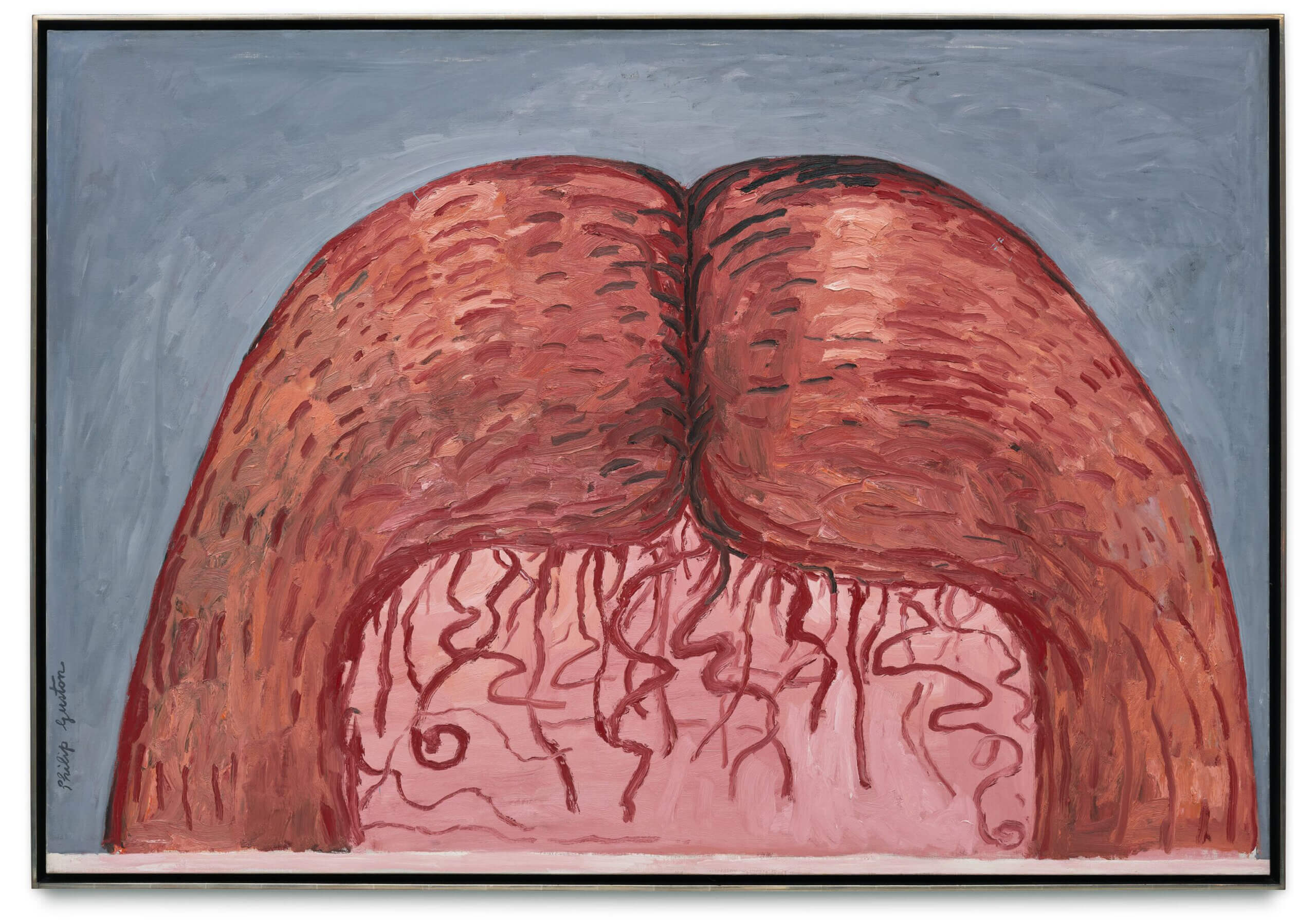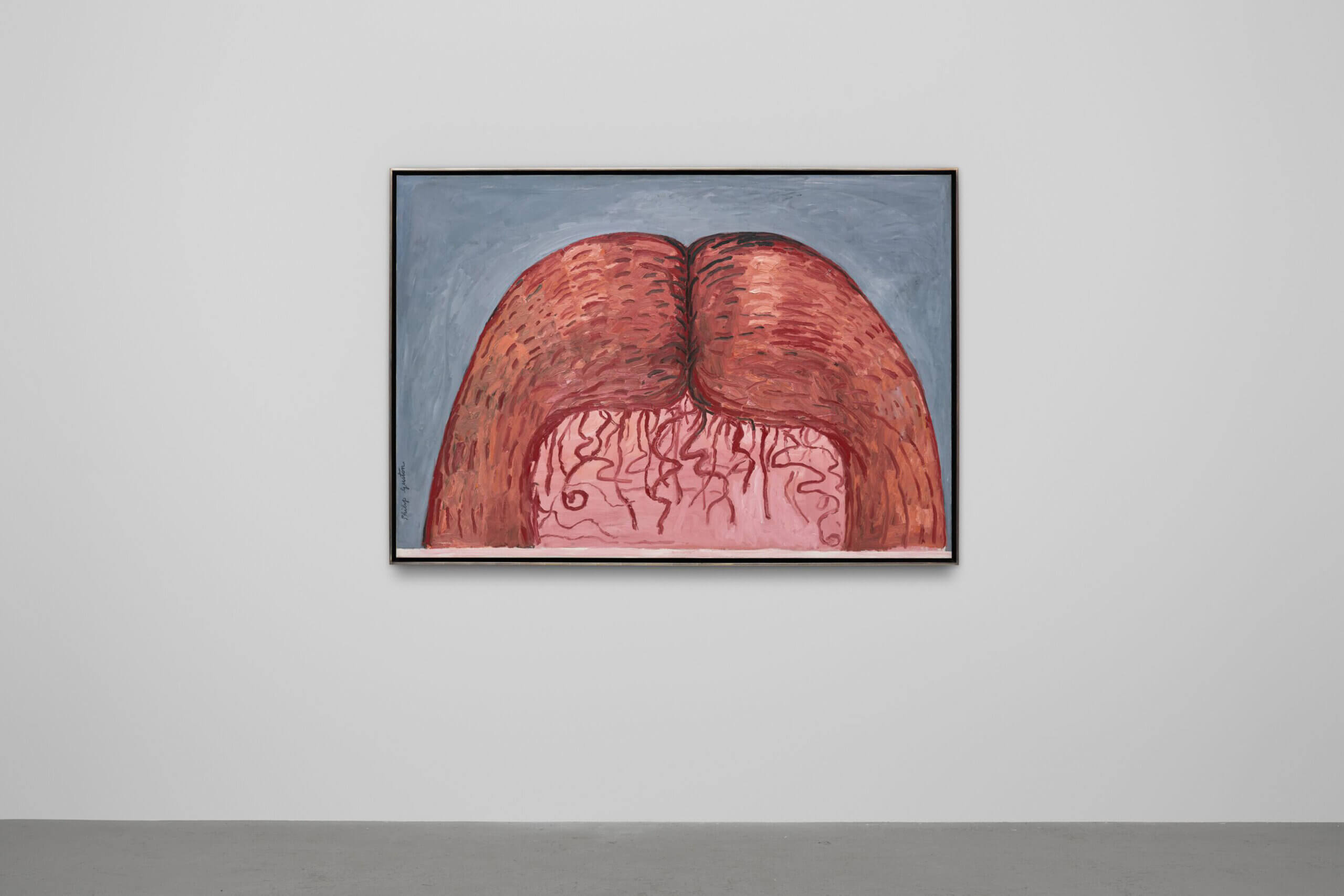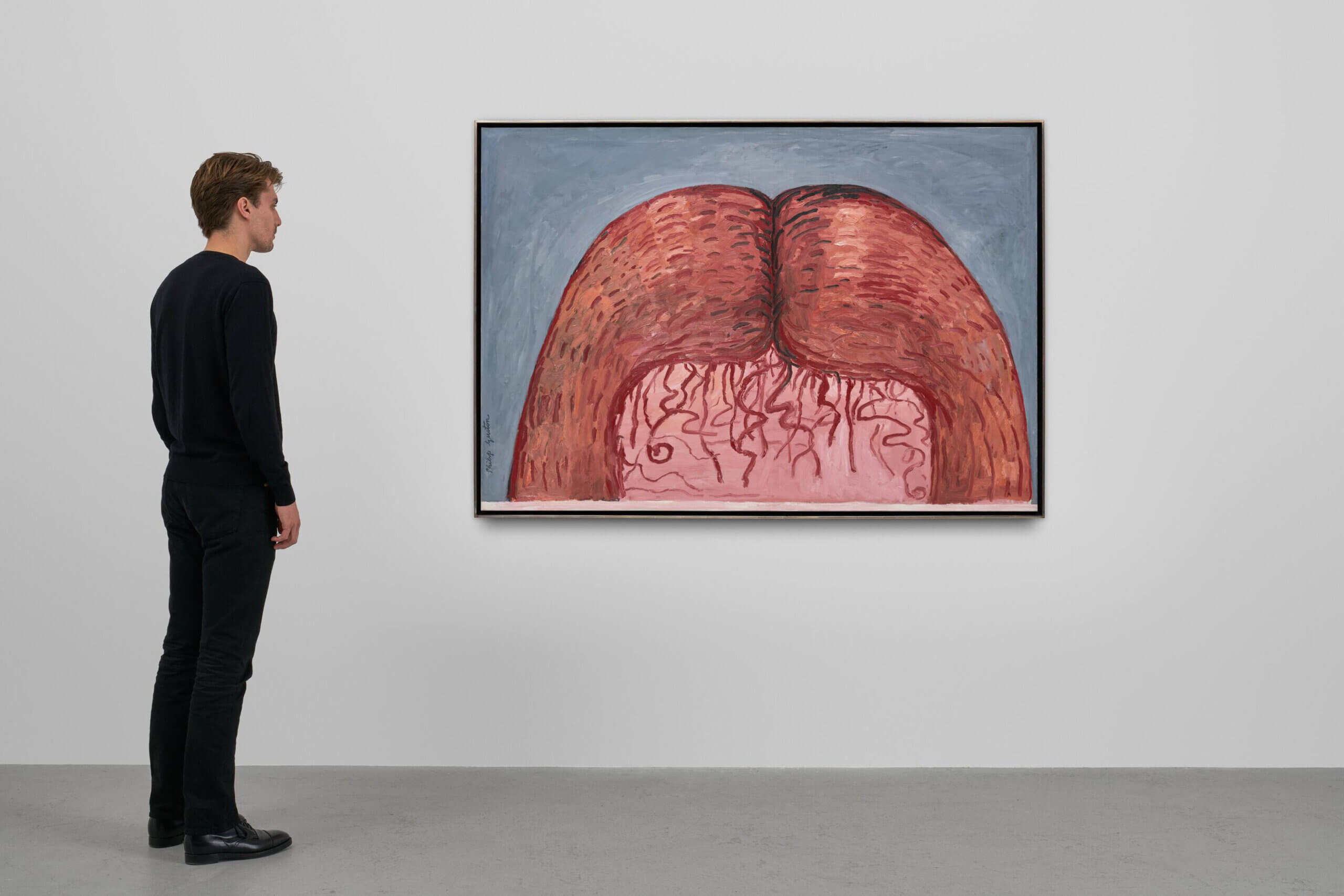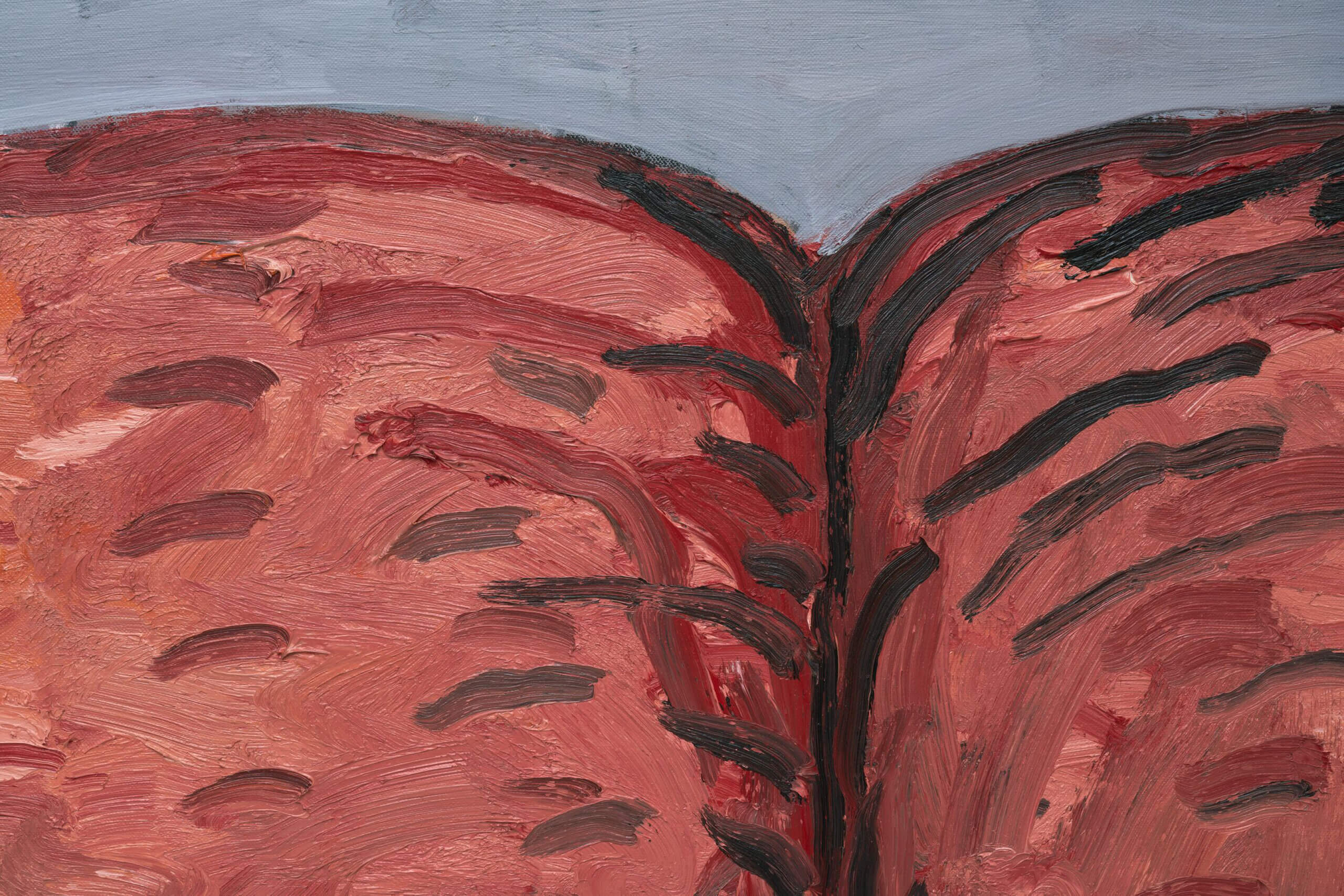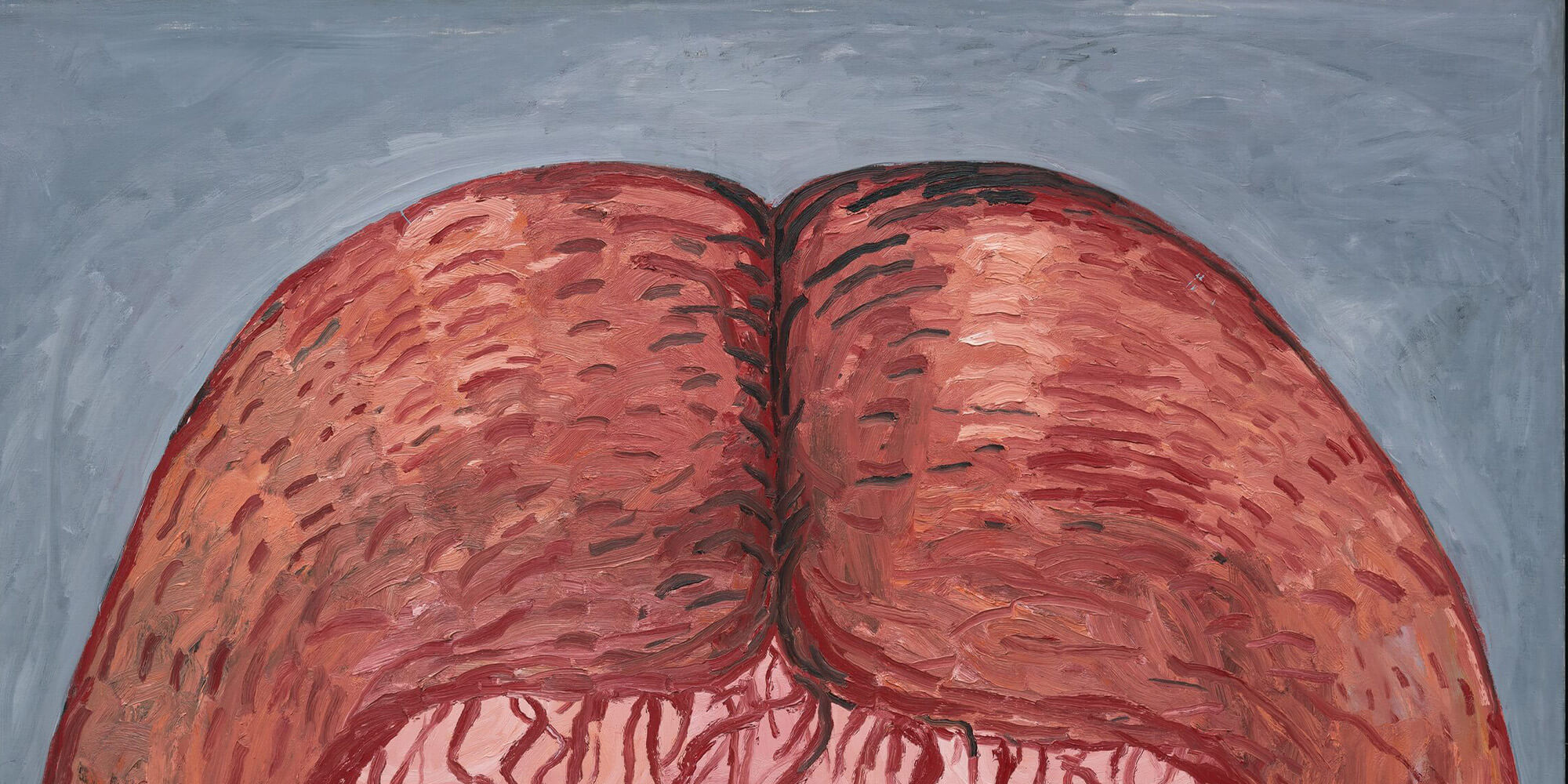
Philip Guston
Musa
Musa
1975 Oil on canvas 122.5 x 178.4 cm / 48 ¼ x 70 ¼ in
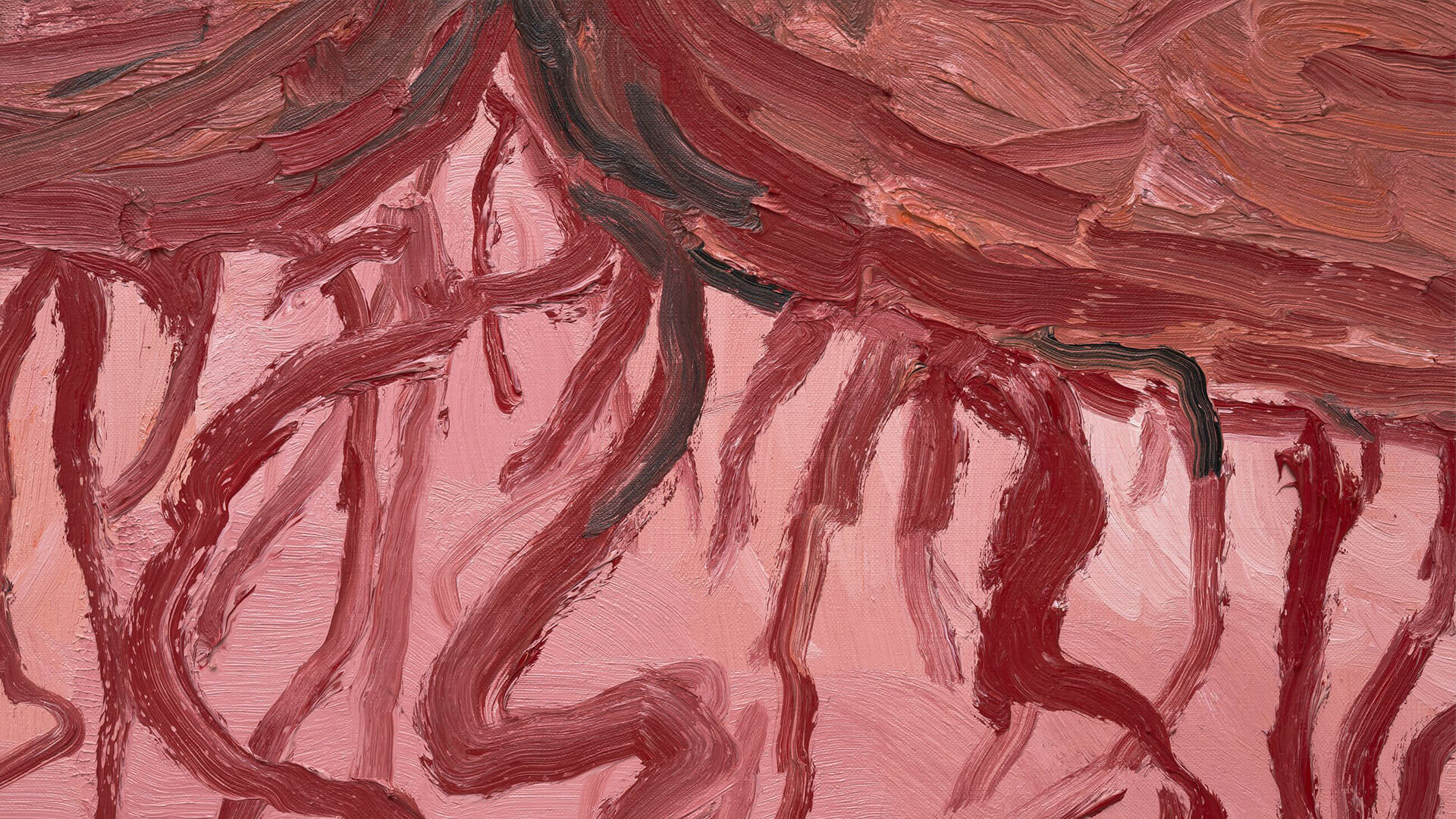
Set against a cinereal field, Philip Guston’s ‘Musa’ (1975) depicts the crown of his beloved wife’s head, her fiery red mane parted down the center and curling along her brow. Heads feature throughout Guston’s work, however, those from his final decade are striking in autobiographical and existential nature, signaling an emotional reckoning with mortality. Characterized by absurdity and darkness, tenderness and anxiety, a ‘tweaking humor’ as described by critic Norbert Lynton, the ‘genre’ of these late works, he posits, ‘is travesty; hence its bubbling sense of apostasy and humor’.
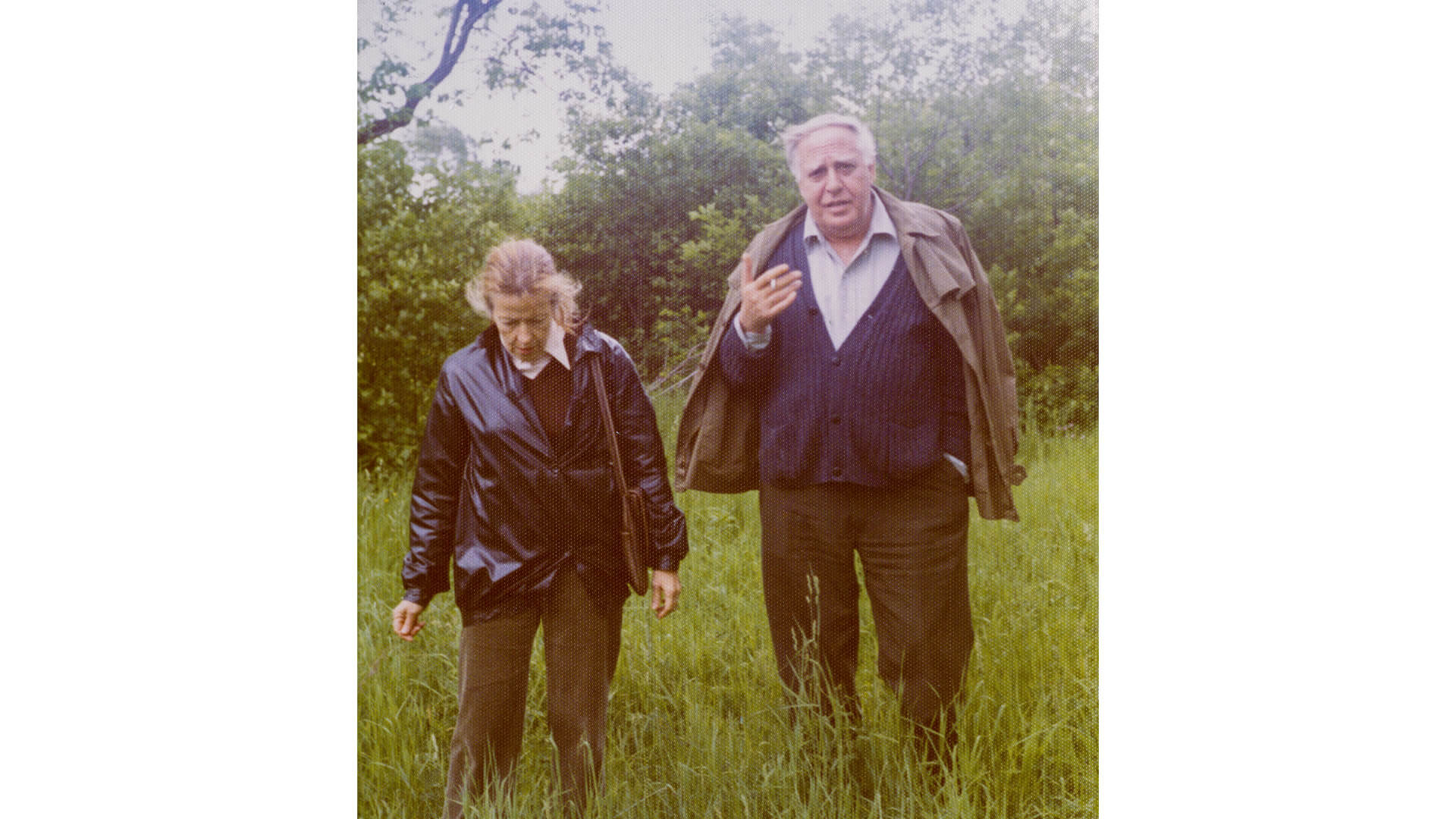
Musa was twice seriously ill during the 1970s and Guston found himself devastated by these brushes with death. Clearly at the forefront of Guston’s mind, Musa became a prominent subject in his last renderings, appearing in varying form: as a sun on the horizon in ‘Source’ (1976), as a unifying web in an untitled ink drawing (1976), elsewhere depicted as an open book, a scroll, a shoe. She is transformed, yet ever-present.
Reflecting on these works, Guston said: ‘My impulse in doing them were quite frankly autobiographical. [...] I mean, to be very specific, two or more years ago my Musa, my wife, had a minor stroke and she was in the hospital for quite a while and I became obsessed with her situation. She became a kind of symbol, of just the top of her head her hair parting over off the horizon, and I’m quite aware that what I’m doing there is using specific—in that case specific—subject matter’.
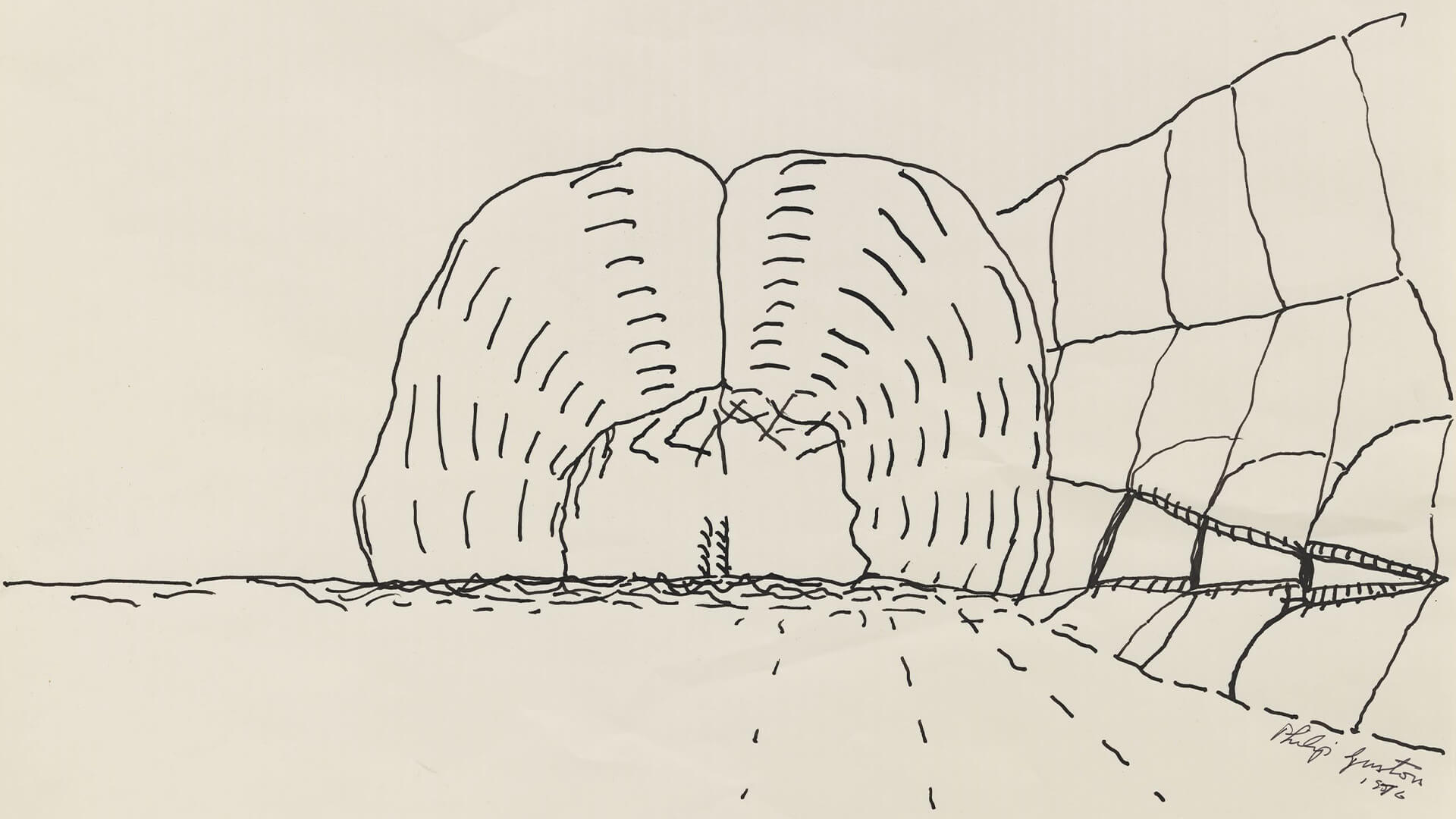
Conveying the emotional process of bearing witness and coping with the inevitability of death, Guston combined his dreams, his desperations and his physical surroundings in his paintings, manifesting in surreal amalgamations and foreboding landscapes—backdrops to Musa's metamorphosis. In 'Musa', Guston reinforces the connection between his partner and his creative process, expressing the profundity of his feelings for her. No one understood the deeply philosophical and reflective nature his work more than Musa, whose unwavering support and astute eye contributed in no small part to his inspirations and his success.
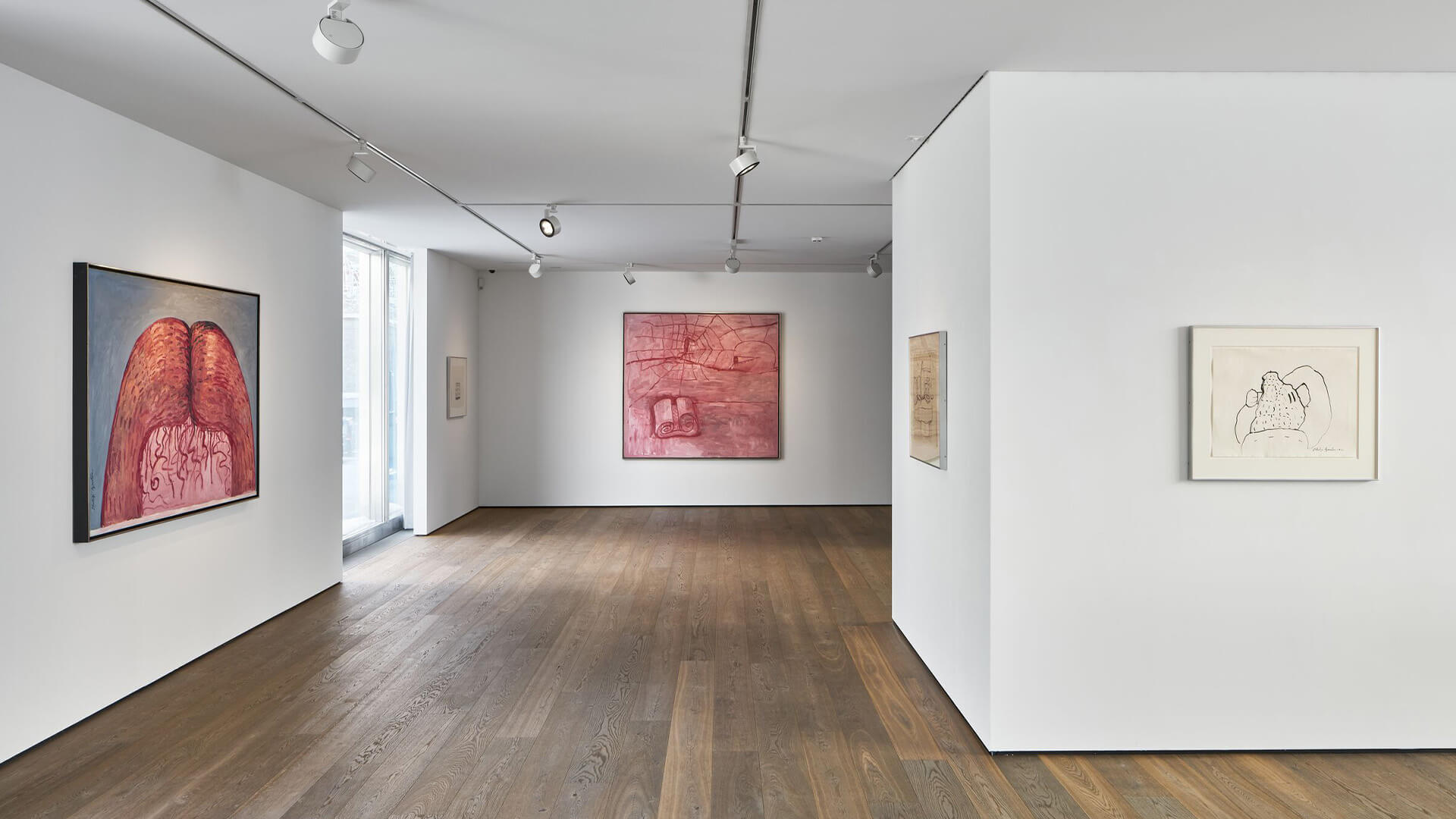
On view in St. Moritz
This winter in St. Moritz, ‘Philip Guston. Transformation’ presents two bodies of work from different periods, abstract (1952-64) and figurative (1968-1977), that together show the depth and complexity of his personal iconography.
All Images © The Estate of Philip Guston. Images: Philip Guston, Musa, 1975. Photo: Jon Etter; Philip Guston, Musa (detail), 1975. Photo: Jon Etter; Musa and Philip, 1974. Photo: Barbara C. Sproul © Barbara C. Sproul; Philip Guston, Untitled, 1976. Photo: Genevieve Hanson; Installation view, ‘Philip Guston. Transformation’, Hauser & Wirth St. Moritz, 2020.
